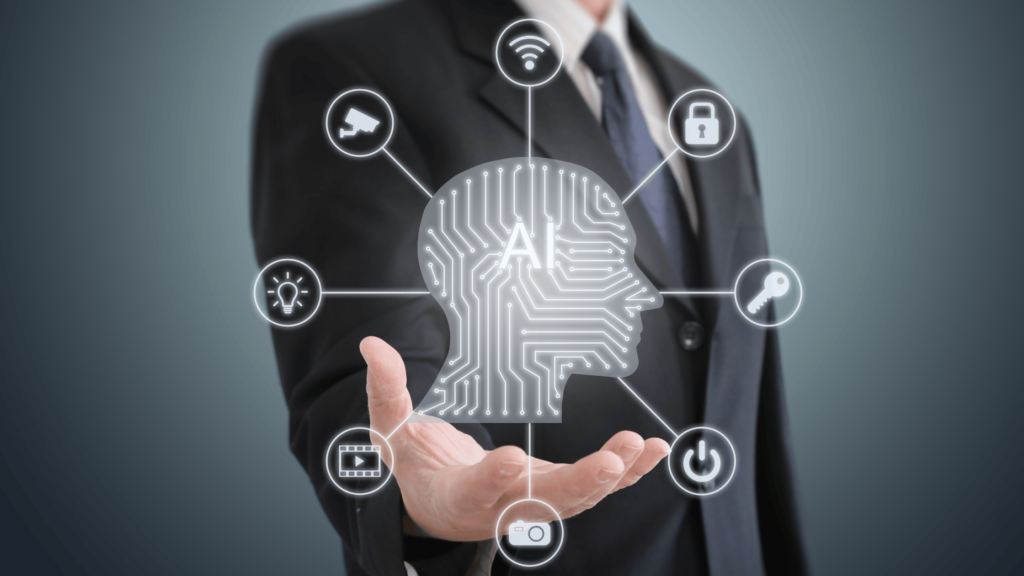Understanding AI Technology- Unveiling the 4 Types of AI
The term “artificial intelligence” (AI) has spread like wildfire across news headlines, academic debates, and casual conversations. AI is shaping the world as we know it, from how we interact with our smart home devices to the way groundbreaking medical research is conducted.
But what actually lies beneath the AI umbrella? In this post, we’re going to peel back the layers of AI technology to reveal its inner workings, focusing on the four foundational types of AI. Whether you’re a techie seeking to refine your knowledge or an educator keen to stay informed on the latest in AI, this thorough exploration will equip you with a strong understanding of this revolutionary field.
The AI Landscape
Before we distinguish between various types of AI, it’s crucial to lay a foundation to understand where they fit within the larger AI landscape. Artificial intelligence is the concept of machines being able to perform tasks that typically require human intelligence. This can be broken down into several subfields, with each type of AI reflecting different capabilities and approaches.
AI has come a long way from symbolic logic and rule-based systems. Today’s advanced AI systems can learn from data, adapt to new information, and perform tasks that rival human capabilities. Broadly, we can categorize AI into four main types:
Reactive Machines
First up, we have reactive machines. These are the most elementary types of AI systems. They are designed to react to specific situations, but their ability to do so is limited to a predefined range of outcomes.
How They Work
Reactive machines use specialized algorithms to interpret and react to sensory input. They don’t have the capacity to form and store knowledge learned from past experiences. Therefore, they also can’t predict future actions based on past events. The most famous example of a reactive machine is IBM’s Deep Blue, which stunned the world by beating world chess champion Garry Kasparov in 1997.
Pros and Cons
Reactive machines have the advantage of being fast and efficient in straightforward, well-defined tasks. However, their inability to learn or adapt can be a major limitation in complex, changing environments that require flexibility and nuance.

Limited Memory
The second type of AI system, limited memory, can learn from data over time. These systems are a leap forward from reactive machines because they have the ability to use memory to learn from historical data.
Learning from Experience
Limited memory AI uses data to make its decisions. It’s not just about reacting to its environment as it encounters it, but about learning from past interactions and adjusting future behavior based on that experience. A popular example of this type of AI is self-driving cars, which collect and process data from the environment to learn and improve their driving capabilities over time.
Issues With Data Dependence
One of the major drawbacks of limited memory AI is its reliance on large datasets to learn. It may struggle with decisions in situations where historical data is sparse, such as rare weather events or one-off accidents. Additionally, these systems don’t possess a comprehensive historical model but rather make decisions based on near-immediate data.
Theory of Mind AI
Theory of mind AI (ToM AI) is a hypothetical AI that possesses the ability to understand and anticipate human emotions, beliefs, and thoughts, effectively “mind reading.” Although this type of AI is more of a theoretical concept than a formed technology, it’s important to contemplate its ethical and societal implications.
Ethical Considerations
When discussing ToM AI, ethical considerations are paramount. For example, introducing this technology into the commercial sector—for targeted advertising, for instance—could raise concerns about privacy and consent.
The Moral Maze
The concept of ToM AI opens up a moral and philosophical maze. How should AI be used when it comes to understanding the human psyche? And what safeguards should be in place to protect user data and autonomy?
Self-Aware AI
Finally, self-aware AI refers to the most advanced form of artificial intelligence, which is not just cognitive but also conscious. This is the stuff of science fiction and philosophical debates—but it’s not entirely beyond the realm of possibility, according to some futurists.
The Heart of Consciousness
Self-aware AI, if it were to exist, would be capable of thought and emotion, not just processing inputs and executing algorithms. It’s predicated upon the idea that, given enough complexity, a system can become conscious.
Philosophical and Practical Implications
The existence of self-aware AI would pose significant philosophical questions about what consciousness really is and whether it can be replicated or simulated in a non-biological system. The practical implications are equally profound, as self-aware AI would have a sense of self and the ability to consider its own existence and experience, potentially leading to more complex and adaptive behavior.
The Future of AI
The AI landscape is dynamic, with innovations and breakthroughs occurring at an unprecedented rate. As we progress, understanding the different types of AI will be pivotal in guiding conversations around the ethical use of AI, the development of AI policy, and the integration of AI into our daily lives.
For tech enthusiasts and educators alike, staying current with the nuances of AI is crucial. By being cognizant of how AI is evolving and the potential it holds, we can ensure that it continues to be developed responsibly and for the greater good.
In closing, AI is no longer just a tool or technology; it’s a force that is shaping the future. By understanding the various types and their implications, we can harness the potential of AI while being mindful of its considerable power and the responsibilities it entails.